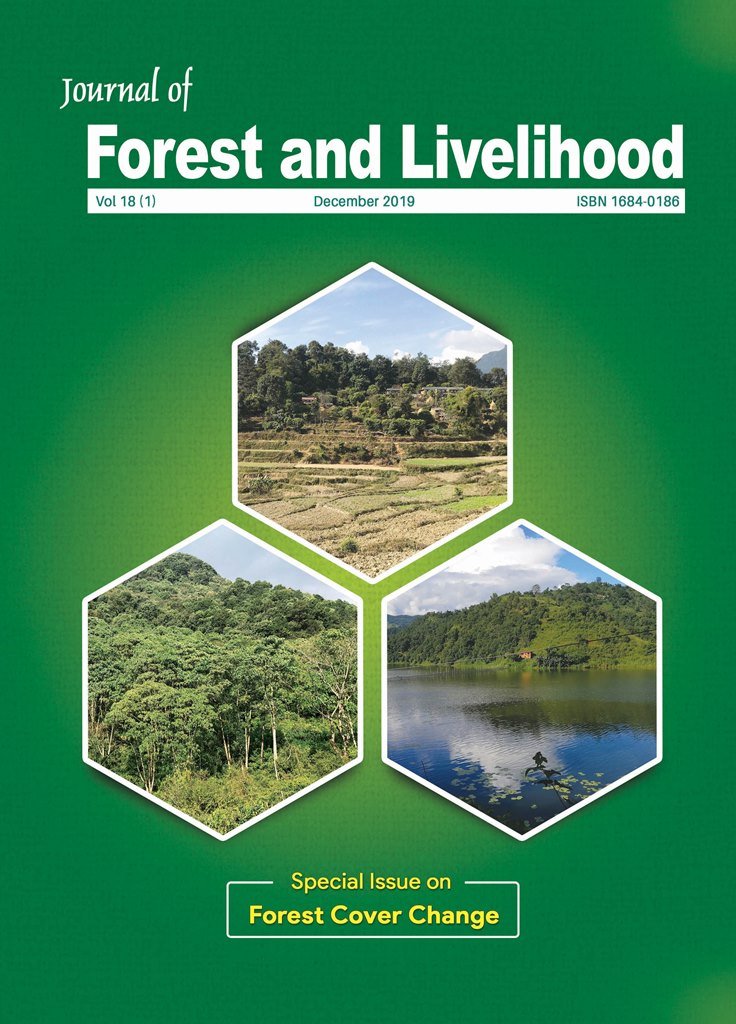Remote Sensing Based Deforestation Monitoring at the Change Hotspot Area in Hindu Kush Himalayan Region
DOI:
https://doi.org/10.3126/jfl.v18i1.59618Keywords:
Forest hotspot, forest loss, forest monitoring, Landsat 8, remote sensingAbstract
Forests play an essential role in providing sustainable ecosystem services and livelihood options for a growing population. In the Hindu Kush Himalayan (HKH) region, forests have been continuously reduced due to increasing demand for timber, fuelwood, and agriculture. Identification of deforestation hotspots and monitoring changes in those hotspots will be highly useful for forest managers to prevent illegal deforestation. In this paper, we identified forest cover change hotspots and areas for annual monitoring in those hotspots. For that factors like land cover from 1990 and 2010, shuttle radar topography mission (SRTM) digital
elevation model (DEM), slope, curvature, and distance from the settlement and roads for all four countries which could influence loss in forest area and overplayed to determine forest hotspots, were considered. Land cover maps of 1990 and 2010 and other GIS layers were used for identification of hotspots using the model builder ArcGIS software. For monitoring of deforestation in the hotspot areas, Landsat 8 images (2013, 2014 and 2015) and geographic object-based image analysis (GEOBIA) technique was used. The method was validated in four study sites in Bangladesh, Nepal, Bhutan and Pakistan. The study revealed that the sites in Bangladesh have higher deforestation during 2013-2014 and 2014-2015 with forest loss of 1121.58 and 1773.18 ha respectively. The web-based forest monitoring system provides information on deforestation useful for forest managers to enforce annual management plans.
Downloads
Downloads
Published
How to Cite
Issue
Section
License

This work is licensed under a Creative Commons Attribution-NonCommercial 4.0 International License.
CC-BY-NC: This license allows reusers to distribute, remix, adapt, and build upon the material in any medium or format for noncommercial purposes only, and only so long as attribution is given to the creator.





